KARAGANDY – The city of Karagandy, Kazakhstan’s industrial powerhouse renowned for its highest quality coal, is a place with a rich history and diverse attractions to explore for a captivating weekend getaway.
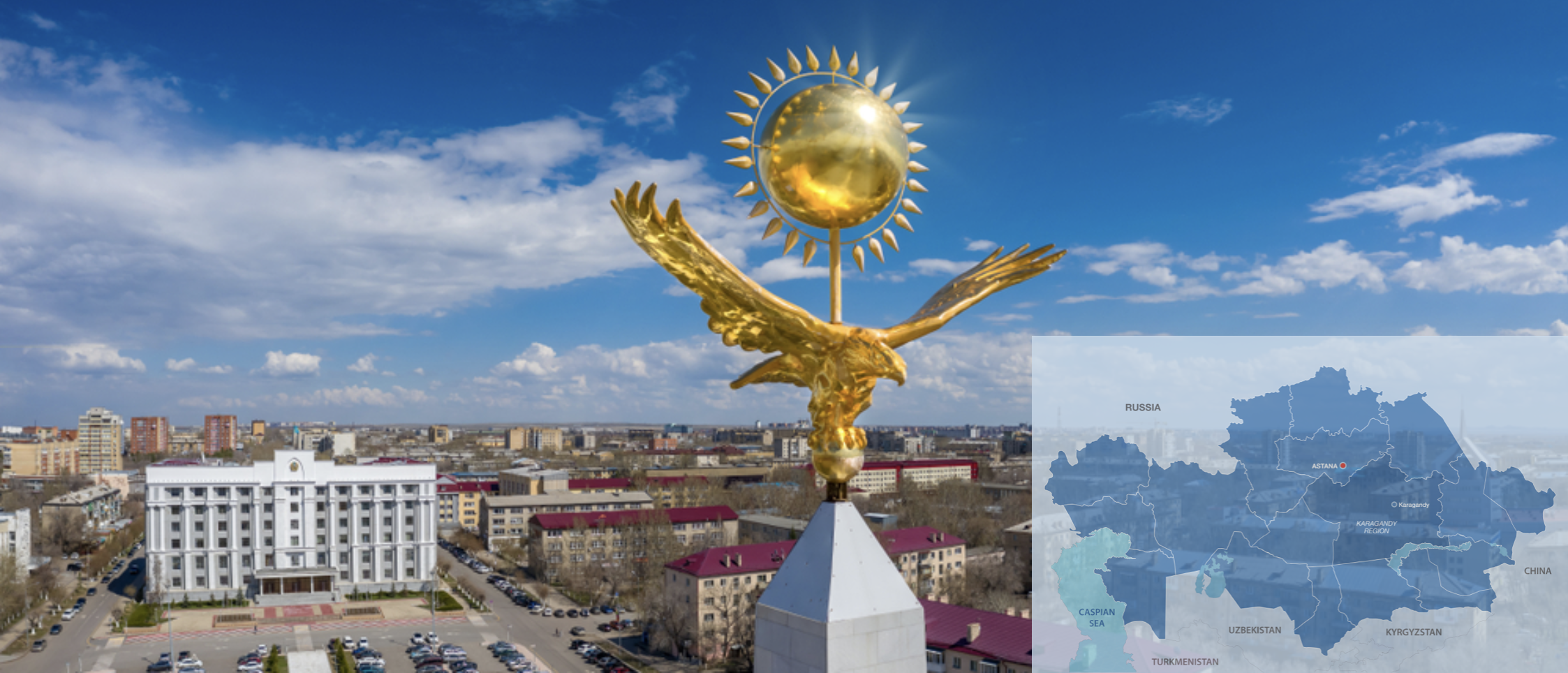
Located in central Kazakhstan, Karagandy is one of the largest industrial cities whose history is intertwined with coal mining. Photo credit: Shutterstock
Almaty and Astana remain the most popular urban destinations in Kazakhstan, but the city of Karagandy, located within a three-hour drive from the capital, is fast becoming a rival attraction.
History of Karagandy
Karagandy’s economy was largely built around coal, and the gains from extraction allowed families in town to prosper.
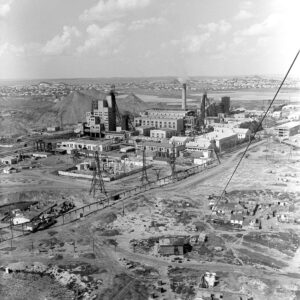
The local economy has been dominated by a coal industry. Photo credit: e-history.kz
“The history of Karagandy coal began not during Soviet times, as many people use to think, but much earlier. According to the legend, a young shepherd named Appak Baizhanov was freezing in the steppe and throwing some stones into the fire and suddenly discovered that some of the stones do not cool down, they heat up very quickly and give away a lot of heat,” said Maria Brizickaya, a tour guide, during a press tour on July 22-23 organized by Kazakh Tourism national company, showcasing Karagandy beyond its coal-centric history.
Gradually the rumor about “special” stones reached the Russian merchant Nikon Ushakov who realized that people were talking about coal. In 1856, Ushakov bought the lands from two Argyn (name of Kazakh tribe) families for 250-255 rubles, located on the current territory of Maikuduk, the industrial part of the city.
Ushakov could not stay afloat for long and sold his business to the Russian merchant Ryazanov.
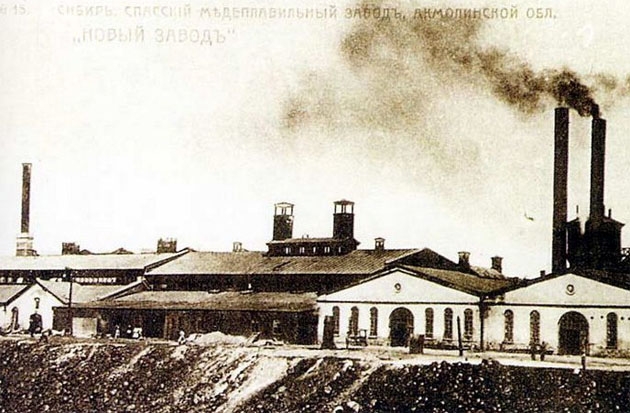
Archive photo of Spasskiy copper plant. Photo credit: kazpravda.kz
From the 1860s onwards, the development of coal fields was in the hands of foreign entrepreneurs. At first, the French entrepreneur Jean Carnot, the son of the former French president Sadi Carnot, bought the land. Later, due to unprofitability, Carnot sold the land to the British entrepreneur who created the Spasskiye copper ores corporation.
Starting from the 1930s, during the Soviet period, surveying works in the region were taking place. Large coal reserves were discovered in the subsoil due to prominent Kazakh geologist Kanysh Satpayev.
Coal mines soon became the third largest source of coal in the Soviet Union.
Miners from different regions of the Soviet Union arrived in Karagandy and brought mining equipment with them. Over time various settlements and villages were established near mines in what is now known as the old town area. Karagandy received the status of a city in 1934 as the population started to grow.
Mine museum
For anyone who has never been inside a coal mine, descending even 15 meters below ground at the mine museum on the basis of Karagandy Mining-Industrial College might be an anxious yet exciting experience.
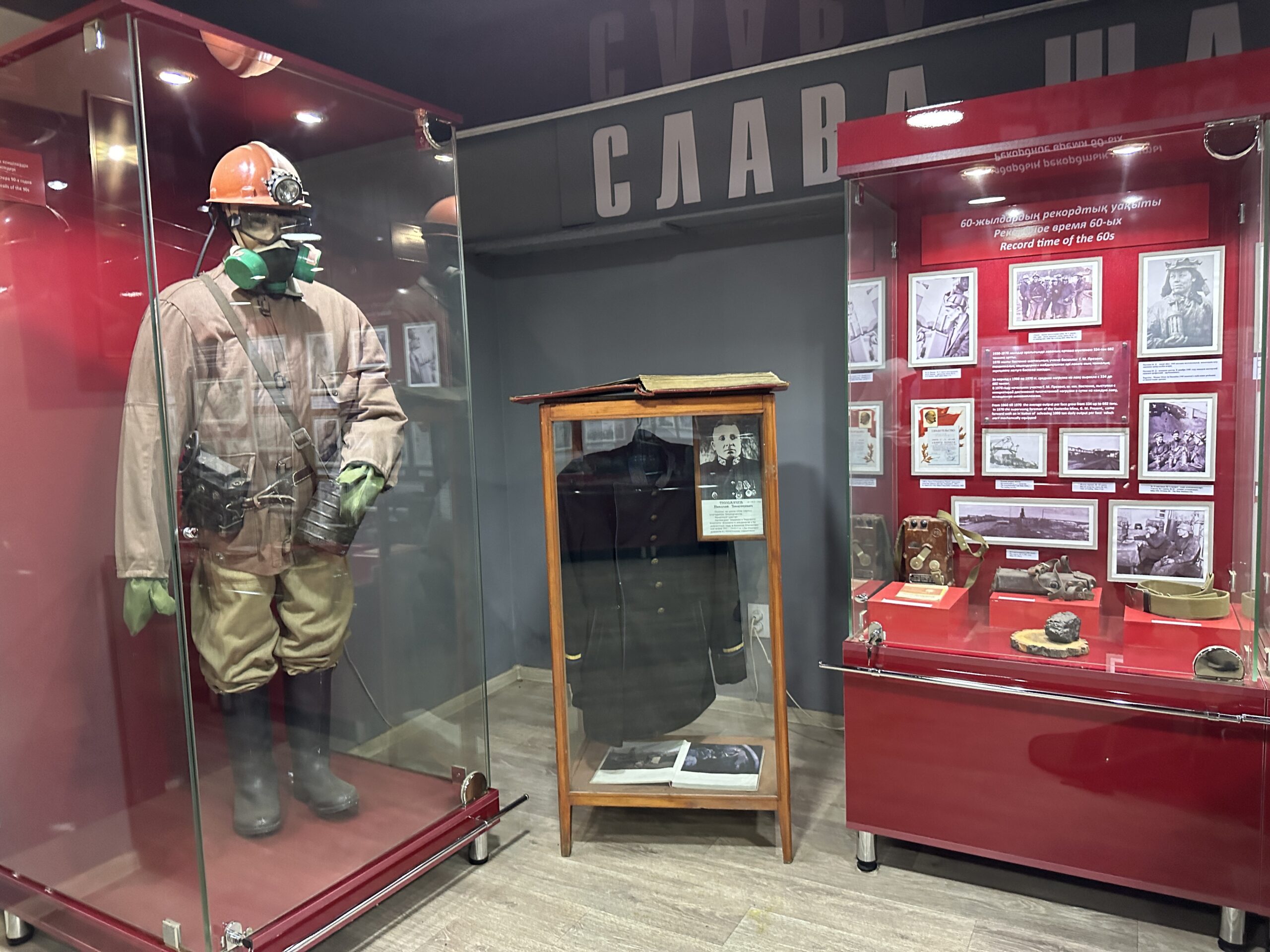
The mine museum showcases all coal-related attributes from a miner’s costume to equipment and coal samples. Photo credit: The Astana Times
The museum created an atmosphere where visitors can walk right into the existing mines to understand just a little of what it means to work deep underground: the hardiness and stamina, the dirt and the risks.
Twenty-five journalists on the tour people stood in silence as the guide demonstrated how the drill and ventilation work inside mines.
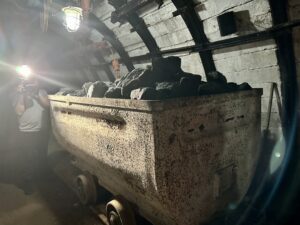
Extracted coal is brought to the surface on such trolleys. Photo credit: The Astana Times
“The drill could drill the seam two meters up and two meters down. The coal is fed to the shearer on a conveyor belt and further transported upwards in wagons. Ventilation in the mine works 24 hours. There is always a lot of noise in the mine, which makes the work incredibly hard,” said Brizickaya.
Located in an area of over 100 square meters, the museum is equipped with machinery used in operating mines, creating real-life conditions for students of the mining college along with tourists.
Inside coal mines with a miner
At hundreds of meters below ground, Oleg Maslov, a geologist of a coal department in one of the Karagandy mines, collects information on the minefield, performs a geological survey of drilling of boreholes, sinking of trenches and pits and makes observations of changes in the structure of coal seams.
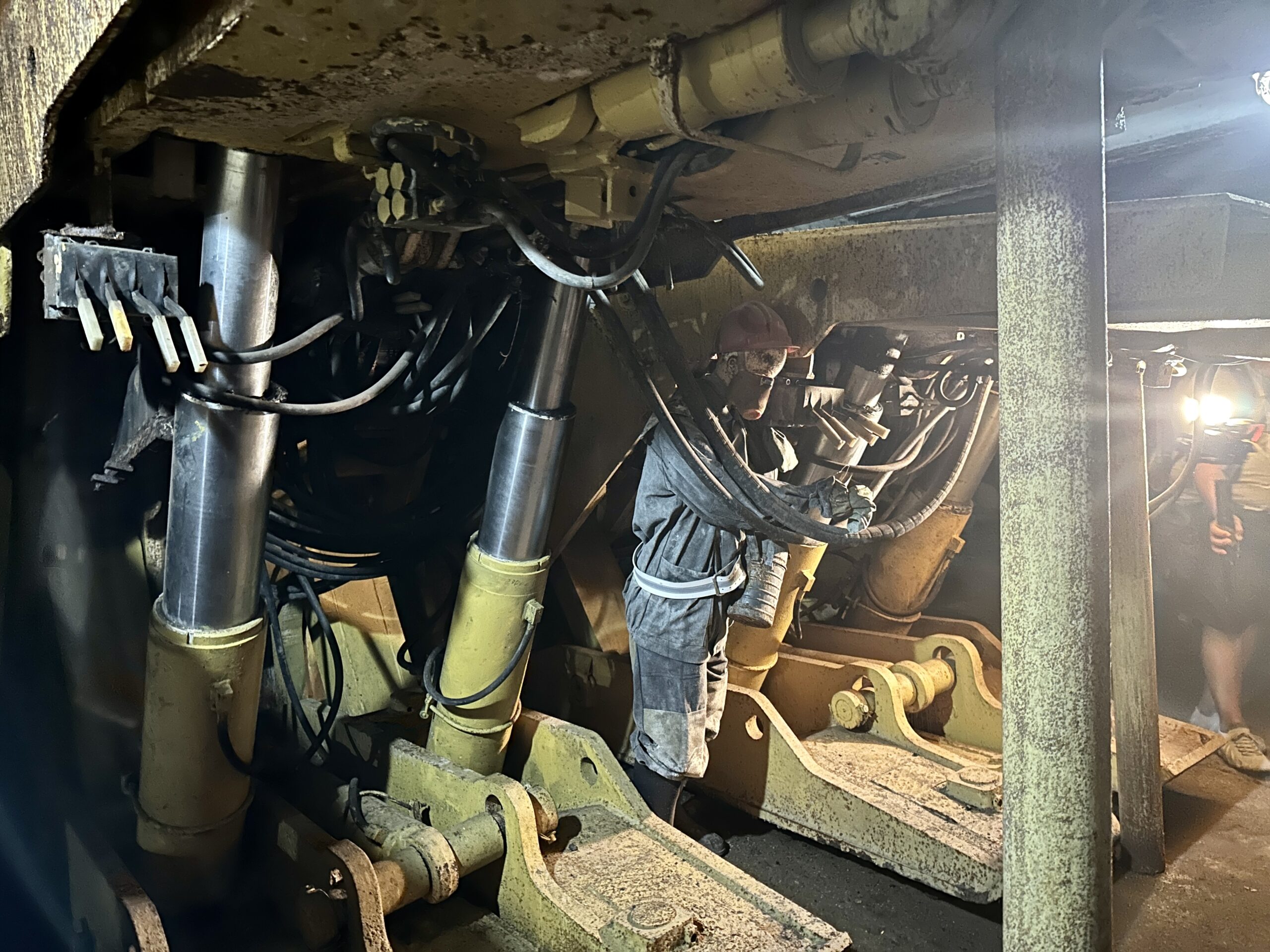
Large hydraulic machines protect miners in case of a collapse. Photo credit: The Astana Times
His shift starts as early as 6 a.m. and lasts till 2 p.m. His focus on predicting mining and geological conditions provides for the rational and safe development of the minefields.
Mining companies take safety very seriously, said Maslov. “A mine is a high-risk enterprise. The main attention is paid to safety. Certain funds are allocated to ensure that mine workers work without injury or loss of ability to work,” he added.
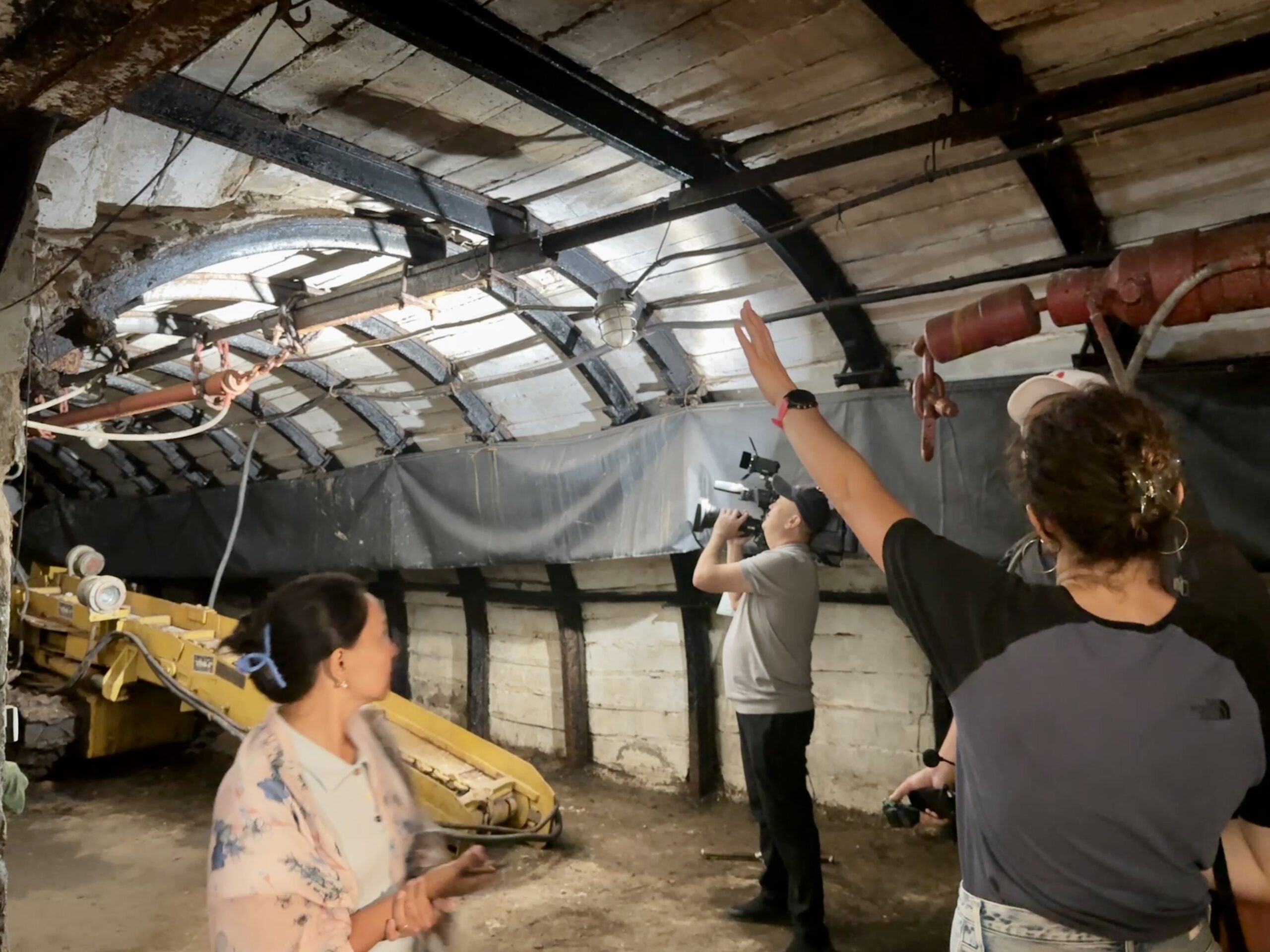
The tour guide explains the working mechanism of the drill (yellow machine) and ventilation. Photo credit: The Astana Times
“The main hazard in a mine is methane gas, which is emitted from the coal seam. The main work is aimed at creating conditions for the ventilation of mines so that the methane content does not exceed the permissible concentration. Because if certain concentrations are exceeded in the mine, an emergency situation may occur,” explained Maslov.
For decades, the Karagandy Region has been a vital source of the highest quality coal, called coke, with few impurities.
“The coal mined at Karagandy mines is mainly used for the needs of metallurgical plants because it is of high quality, which is suitable for steelmaking,” said Maslov.
“Coal extracted through underground mining is not sold to the population. The general public uses coal that is mined by the opencast method. It is of lower quality than underground coal. It is also used for the needs of thermal power stations,” he added.
During the Soviet Union, there were up to 26 mines. Now, there are eight mines in the Karagandy coal basin remaining.
Catholic cathedral
Religious images decorate the walls, and 12 apostles protect the 12 columns, the 12 pillars of the church, inside the Cathedral of the Blessed Virgin Mary of Fatima in the southeast of Karagandy.
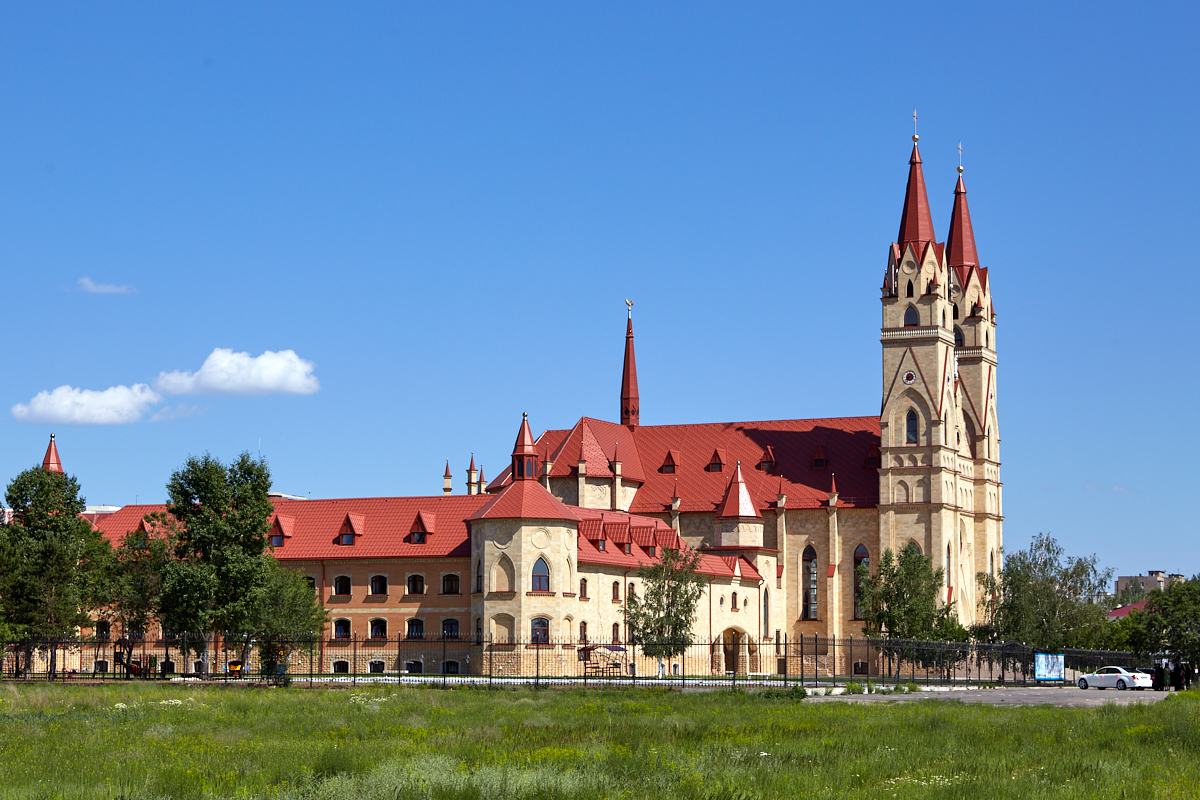
Cathedral of the Blessed Virgin Mary of Fatima. Photo credit: Alexandr Zaleskiy/zaleskiy.com
Opened in 2012, the cathedral has a gothic exterior, topped with red towering spires that give off a European-style atmosphere. A large number of mosaics portraying various saints adorn the walls of the cathedral, with large stained glass windows depicting moments from the life of Jesus.
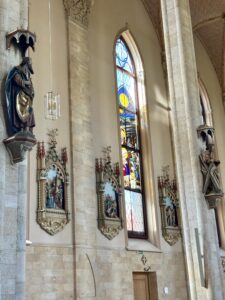
Large stained glass windows depict the moments from the life of Jesus. Photo credit: The Astana Times
“In 2002 the construction has started. A woman in Germany had a vision from the mother of God. Mary wanted the woman to start building, to be a sponsor for a temple somewhere in the Urals, but there was no need for a temple,” said one of the sister servants of the cathedral.
“That time coincided with the visit of John Paul II to Astana, after which former president Nazarbayev gave land for the construction of a new temple and they were looking for sponsors. The woman found that out and the construction began. There were a lot of sponsors from abroad. The temple has been under construction for 10 years and in 2012 it was completed,” she added.
The cathedral also has a large pipe organ. Organ concerts take place twice a month.
Central Park
One of Karagandy’s most recognizable landmarks, Central Park, was built during 1935-1941 as a getaway from the city concretes and one of the major tranquil green spaces. Strolling among the poplar and birch groves provides a feeling of having been removed from the hustle of the city.
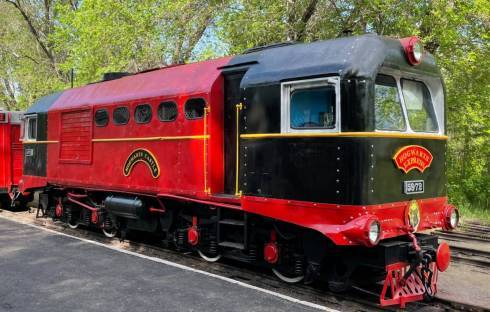
Karagandy children’s railroad is the only railroad in Kazakhstan served by children. Photo credit: ekaraganda.kz.
Its 150-hectare area includes cycling and pedestrian paths, a boating lake, a beach, sports fields, amusement rides for kids and adults alike and dining areas.
For young rail enthusiasts, Central Park railways offer one of the loveliest Hogwarts Express-themed train rides to enjoy the scenic views along the park.
The Karagandy children’s railroad features a uniquely restored railway carriage and behind-the-scenes magic that went into driving a locomotive with young boys and girls serving as conductors, signal maintainers and mechanics, exhibiting their fondness for railways. It is the only railroad in Kazakhstan served by children.
The train station features many sets from the Harry Potter universe, starting from the large dementors hanging by the entrance to Hagrid’s hut and the Platform 9 3/4 trolley.

